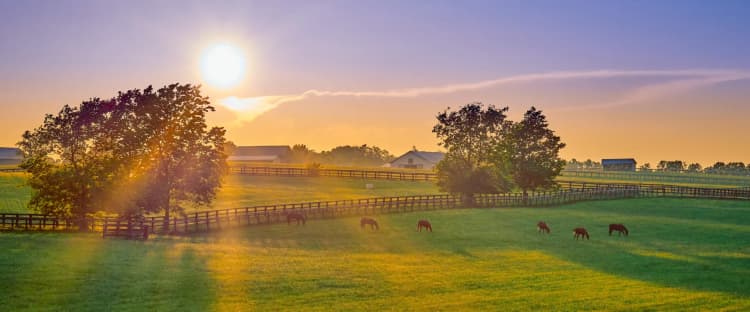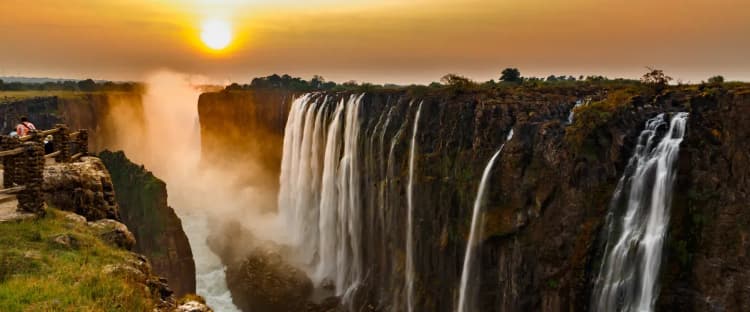
Delhi: The Indian City Home to Asia's Largest Spice Market
As one of the world’s largest metropolitan areas, with an estimated population exceeding 32 million, Delhi has plenty going on. Head to this North Indian city to uncover centuries' worth of historic monuments—including the earliest examples of Mughal architecture—and a diversity of culinary, artistic, and spiritual traditions, reflective of the city's pan-Indian and global influences.
And while India’s capital territory is often dismissed as loud and chaotic, scratch beneath the surface and you’ll unveil everything from artsy mural-filled neighborhoods to peaceful places of repose.
Mughal monuments

Although numerous dynasties have controlled Delhi in the last millennia, the Mughals—who ruled from 1526 until 1857—made one of the biggest architectural impacts on the city. Typical Mughal structures emphasize symmetry and usually feature large arched doorways and massive onion domes. Although the style declined along with the empire, it was a major precursor for the Indo-Saracenic architectural style that’s dominant across many of the official government buildings erected under the British Raj.
While the Taj Mahal in Agra is the world’s best-known Mughal structure, Delhi is home to two of the most important: Humayan’s Tomb (completed in 1572) the oldest major example of Mughal architecture, and Red Fort Complex, which was largely constructed in the mid-17th century and served as the primary residence of the Mughal emperors from the 17th century until the fall of the empire in 1857. Both are UNESCO World Heritage Sites.
The chaat of the town

Delhi is known across India for its savory—and oftentimes tangy—street food snacks collectively dubbed Dilli (Delhi) chaat. Although chaat can be found across the northern reaches of the subcontinent, Delhi is particularly known for treats such as aloo tikki (fried mashed potato patties with peas and spices) and papri chaat (fried wafers served with yogurt and tamarind chutney then topped with spices and crisp chickpea noodles).
While Dilli chaat is most typically found at street food stalls in neighborhood markets, these days you can easily score some of the savory goodness at local sweetshops or even chaat-focused chain restaurants such as Haldiram’s and Bikanervala.
Sing to the heavens above
Delhi is the birthplace of qawwali, a type of energetic Sufi devotional singing that emerged in the late-13th century–and was popularized globally in the 1980s by singer Nusrat Fateh Ali Khan. Qawwali sessions are typically led by musical groups (known as "parties") of around six to nine musicians who perform seated, singing their praises to the tunes of harmoniums, tablas, and plenty of clapping.
You can experience authentic Qawwali for yourself every Thursday around sunset, at the dargah (shrine) of Sufi saint Hazrat Nizamuddin Auliya in Central Delhi. The sessions are free and all are welcome.
The art of the city

As a massive capital, Delhi has a huge fine arts scene with numerous museums and galleries spread across the central and southern parts of town. Some of the most important collections are preserved by the government at the National Museum and the National Gallery of Modern Art.
If you're looking to immerse yourself in the city's contemporary arts scene, Vadehra Art Gallery and Nature Morte are among the most established galleries in the city, although in the last decade, South Delhi's Lado Sarai has turned into an arts district unto itself, with over a dozen galleries showcasing the works of emerging and established Indian artists.
You can get a feel for the Delhi art scene without setting foot in a gallery by taking a walk through the Lodhi Art District, where you’ll find 50-odd colorful murals conceptualized by artists from India and across the globe who began painting murals in 2015 at the invitation of the St+Art India Foundation.
Getting crafty
India has rich traditions of artistry and handicrafts that vary greatly from region to region. The best place to familiarize yourself with these traditions is at the National Crafts Museum & Hastkala Academy, known for its impressive collections of folk crafts, ritual arts, and textiles. The collection highlights India’s cultural diversity, with objects and artifacts from far-reaching corners of the subcontinent. Expect to see gold and silver inlay water vessels, cast-metal sculptures depicting Hindu deities, ceremonial headgear from Tribal communities, and intricately brocaded silk textiles—-there's even a storyteller's scroll painting dating to the turn of the 20th century.
Want to take some of the beauty home with you? Head to Dilli Haat, a tourist-focused craft market that features a changing rotation of booths from makers across the country along with food stalls showcasing the cuisine of most of India’s 28 states.
Parks and respite

As with most capital cities, Delhi has a bit of a reputation as being loud, polluted, and full of traffic. While there's certainly some truth to this assumption, Delhi also has tons of parks where locals go to seek greenery and repose. In fact, roughly 23% of the capital is green space.
Among the city’s most popular parks is Lodi Gardens, a 90-acre expanse of nature that's dotted with well-preserved 15th-century tombs. The Garden of Five Senses is another great bet, featuring a series of gardens, fountains, and installations designed with sensory engagement in mind.
Spice things up

North Indian food relies heavily on fragrant spices, from cardamom to cloves and saffron to star anise. Delhi happens to be one of the top places on the subcontinent—if not the continent—to replenish your spice rack, notably at Khari Baoli, Asia’s largest spice market, which attracts merchants from across Northern India who come here to buy spices, nuts, pulses, and grains in wholesale quantities.
At this perpetually crammed market, you can rub shoulders—quite literally—with wholesalers, many of whose families have been vending here since the market first emerged in the mid-17th century. Even if you aren’t much of a culinary wizard, it’s still worth a trip to take photographs of massive piles of colorful seasonings or simply for the fun of experiencing olfactory overload.
Keep the faith
Delhi is a religiously diverse city, and while Hinduism is the majority faith here, the city also has Muslim, Sikh, Buddhist, Christian, and Jain populations. While this diversity can partially be attributed to Delhi's long history as a capital city (under many different ruling empires), widespread migration—both during and after the 1947 Partition of India—has also been a driving factor.
This diversity is most outwardly reflected in the city’s many houses of worship. You can learn about Sikhism or stop for a meal at the langar (community kitchen) of Gurudwara Bangla Sahib or attend a mass at the Sacred Heart Cathedral. You can step back in time at the 17th-century Jama Masjid, India’s largest mosque, or spend time in quiet reflection at the Bahá’í House of Worship, better known as the Lotus Temple.
Good to Know
Is Delhi expensive?
Delhi is a very budget-friendly place to visit. You can get a decent room in a mid-range hotel for around $45 per night, and there are lots of lodging options for even the tightest budgets. The bill for a multi-course meal for two ranges from $12-45, and you can still eat well for less than $4.
Best time to visit Delhi
Delih’s most pleasant weather occurs from autumn through early spring, from September-March. Temperatures range from highs of 93F in September to 67F in January, with low temperatures dipping into the mid-40s in the winter.
It’s important to note, however, that while the temperatures may be agreeable during this time, the city may also be under a layer of thick smog. The smog usually starts in October or November, though it tends to let up by the end of February at the latest.
What languages are spoken in Delhi?
Both Hindi and English are official languages in India, and you’ll find English in Delhi is widely spoken and understood.
Delhi with kids
Delhi is a feast for the senses that will leave a lasting impression on travelers of all ages—but it can be a challenge to visit with kids. The city may be louder and more heavily polluted than you’re used to, and the sheer number of people can make it feel chaotic in a way that may be uncomfortable for parents with littles.
Having said that, Delhi is also a place with colorful neighborhoods to explore, unique monuments to see, and lots of parks and green spaces suitable for kids to run around—including places like Lodi Garden.
Delhi public transportation
In a city as vast as Delhi, you’ll need a good way to get around. Recent improvements to the city’s metro system have made it the biggest and best in the country, with 10 lines of air-conditioned trains zipping from one end of the city to another. There’s even a car reserved for female passengers on every train. Delhi’s bus service has hundreds of routes and is very cheap, but it’s not especially comfortable for visitors to navigate—buses can get incredibly crowded and bus routes aren’t shown at bus stops.
Is Delhi safe?
India ranks #135 in the world.
India ranks #54 with a score of 63/100 for LGBTQ+ rights.
Getting to Delhi
- Main airport: DEL
- Average Going price for cheap flights to Delhi: $636 roundtrip
Going members get amazingly cheap flights delivered right to their inboxes.
Read about other Indian destinations:
Published October 26, 2023
Last updated December 19, 2023
Articles you might like
View AllTreat your travel to cheap flights
Most deals are 40-90% off normal prices with great itineraries from the best airlines. If it's not an amazing deal, we won't send it. Sign up for free to start getting flight alerts.




